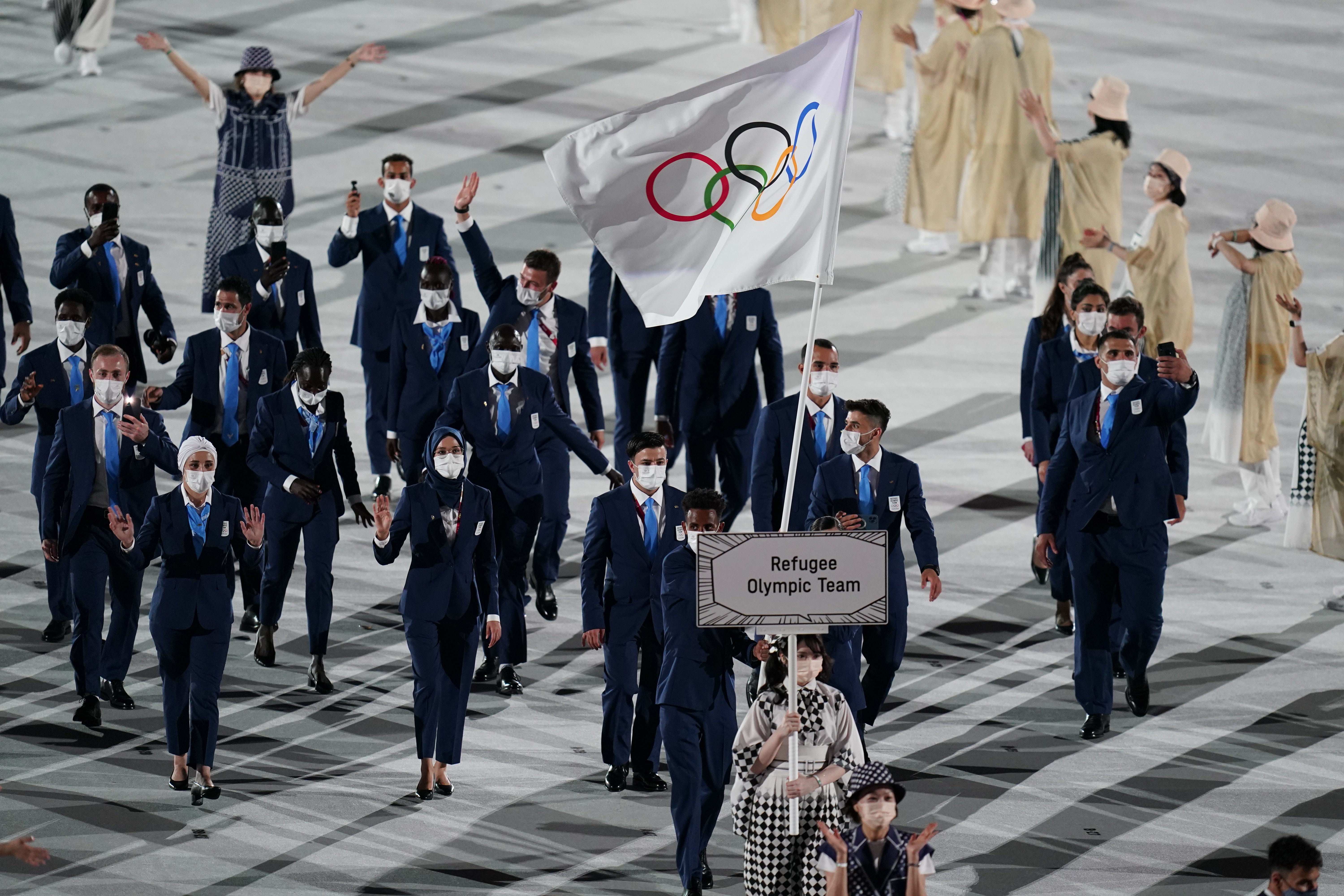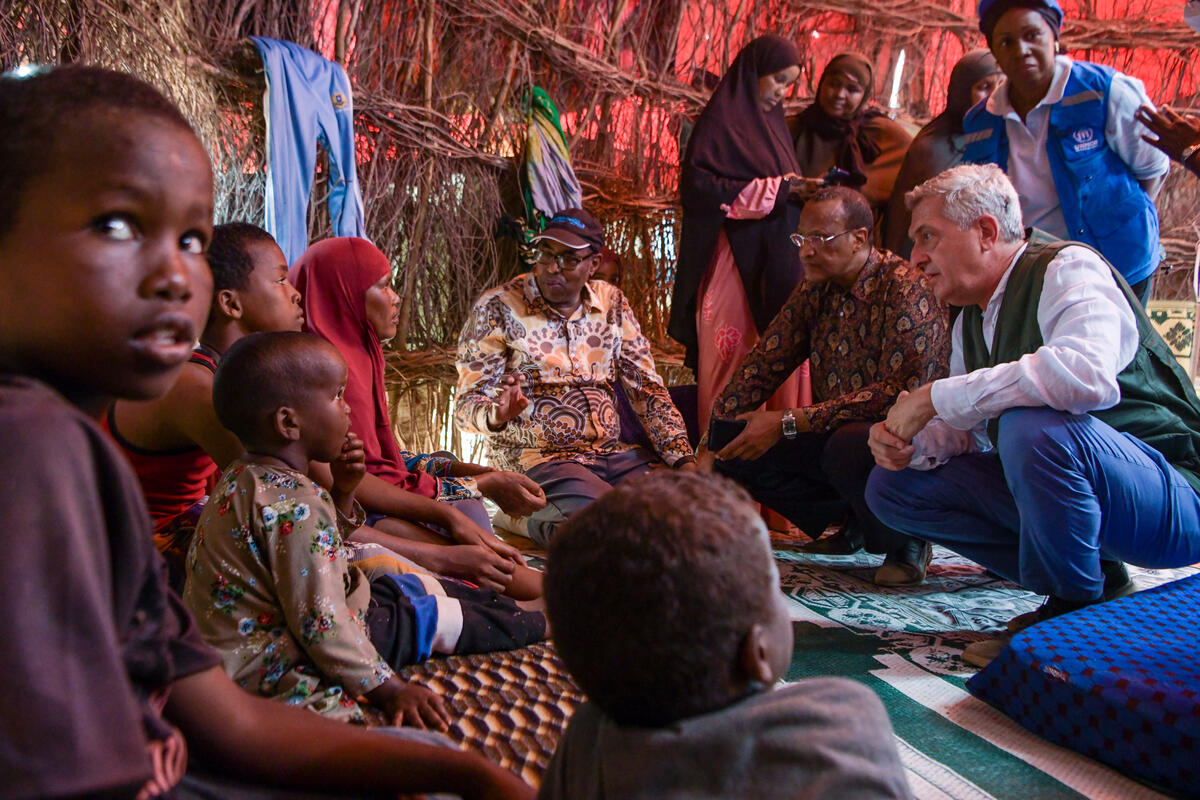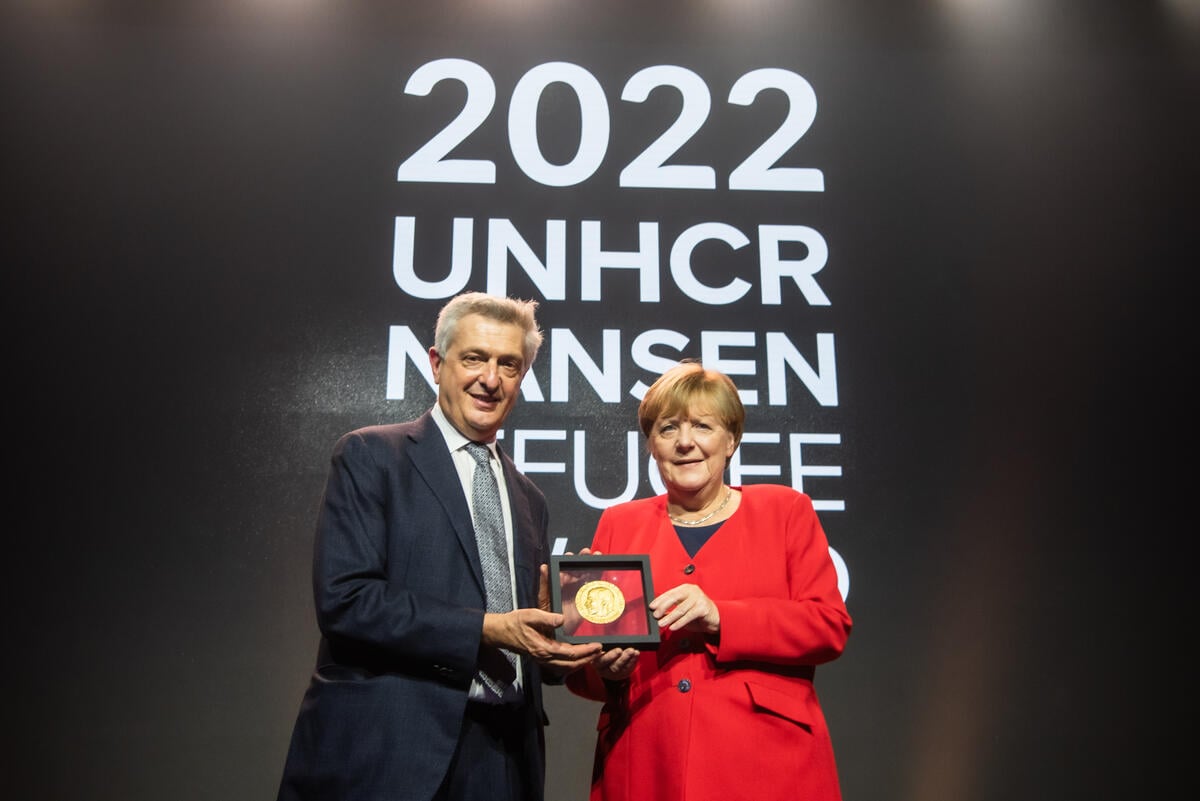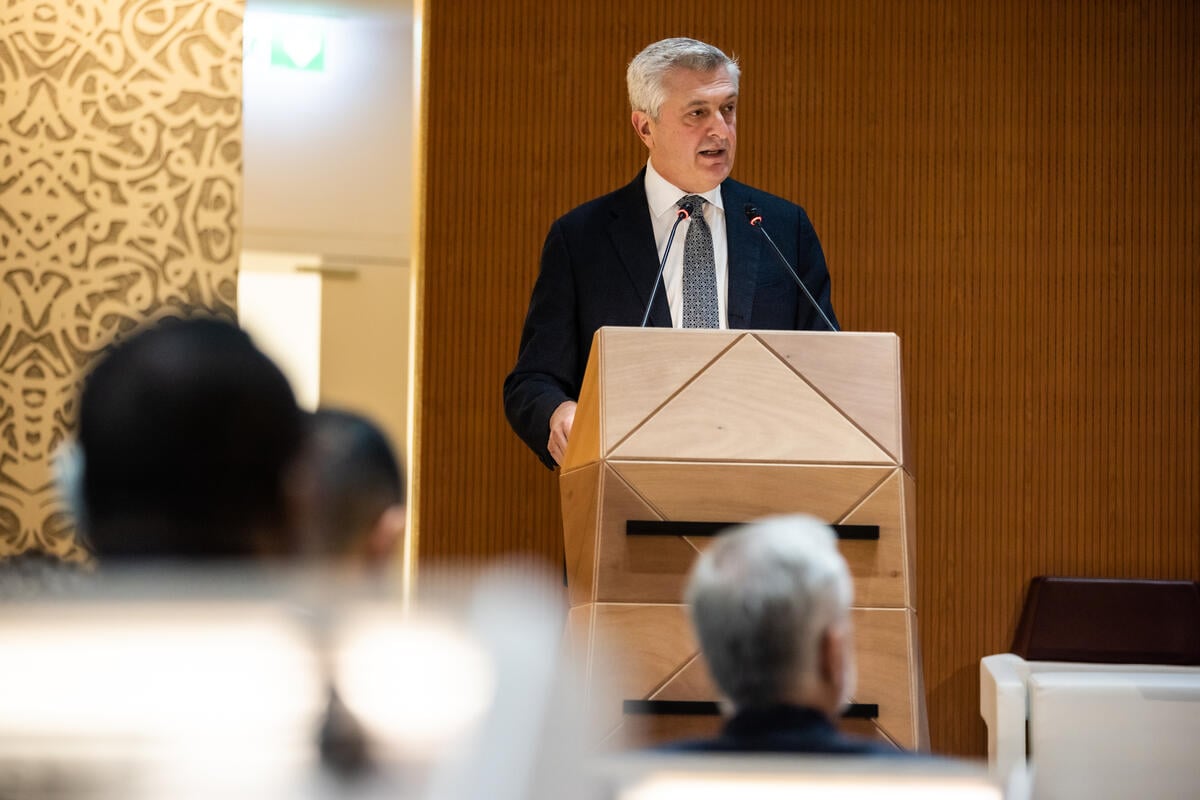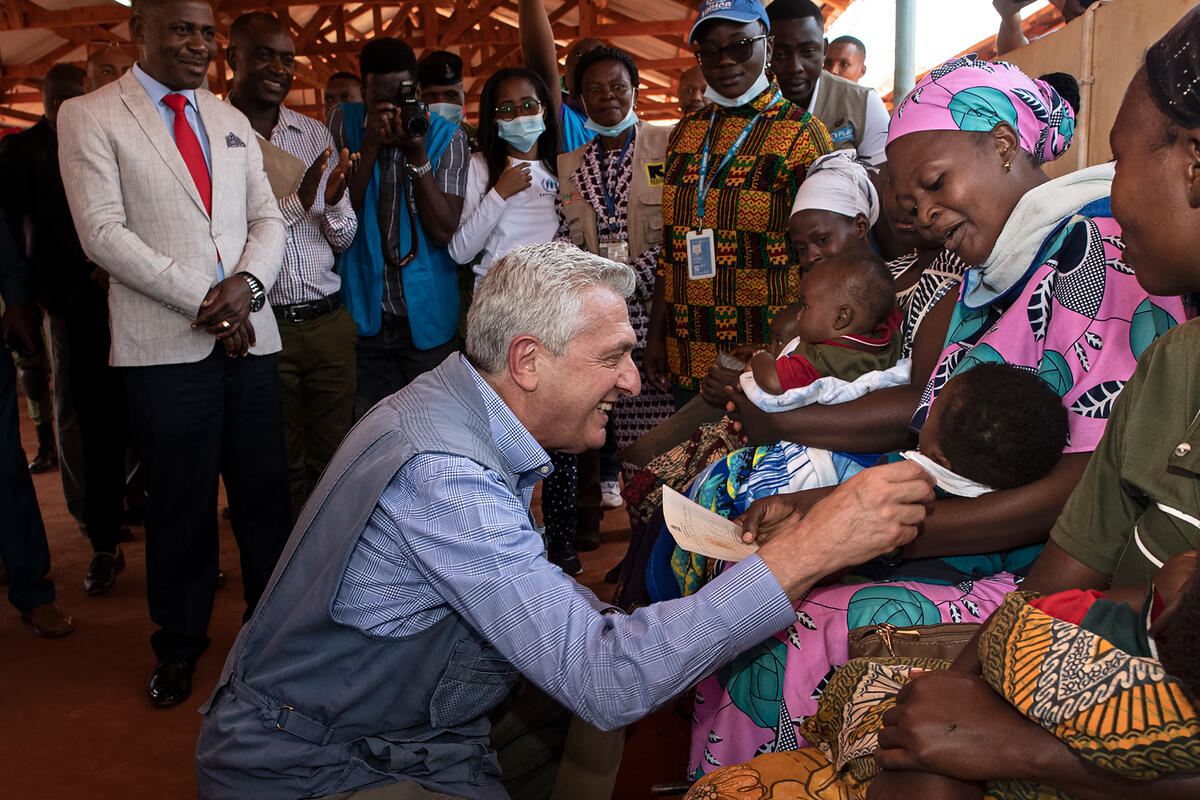UN Refugee Chief in Mexico hears stories of hope and despair from Central American refugees, calls for more support for refugee response
UN Refugee Chief in Mexico hears stories of hope and despair from Central American refugees, calls for more support for refugee response

Mexico City – During a four-day visit to Mexico, UN High Commissioner for Refugees Filippo Grandi visited an innovative programme to integrate refugees, and met refugees and asylum seekers in cities in the northern and southern parts of the country, who told him about the violence, abuse and persecution they suffered at the hands of criminal gangs, which forced them to flee their countries.
High Commissioner Grandi began his visit to Mexico last Friday (27 September) in the northeastern state of Coahuila, where he visited a factory in Saltillo which employs some 70 refugees out of a total of 1,500 workers. The refugees working there have been relocated from the south of the country through a collaborative scheme between authorities at the central, state and local levels, private enterprise, civil society and UNHCR, the UN Refugee Agency. The programme helps refugees integrate and contribute to the local economy. The High Commissioner was heartened to hear about their experiences upon arrival, the welcome they received from local communities and the ongoing process of integrating into Mexican society.
“This innovative scheme is a win-win situation,” Grandi said. “It helps to fill labour shortages in some regions, while giving refugees and their families access to jobs, education and housing and, above all, safety and dignity. It is an excellent model that could be replicated, not only throughout Mexico but in other parts of the world.”
Under the scheme, and with the support of the local authorities, over 3,000 refugees have been relocated to four states in Mexico this year alone. On average, more than one hundred refugees are relocated to cities in central and northern Mexico every week.
From being a country of transit for people hoping to reach the United States, increasingly Mexico has become a destination country for refugees and migrants from Latin America and beyond. Asylum applications in Mexico have soared from around 2,100 in 2014 to over 48,000 in the first eight months of this year.
“Mexico is facing increased challenges and concerns as a result of policy changes in the United States which have led to a significant increase in the number of individuals deciding to apply for asylum in Mexico, putting additional strain on an already overwhelmed asylum system,” Grandi explained. “Concerns in this regard are particularly acute along Mexico’s northern border.”
The High Commissioner also visited the southern state of Chiapas, which hosts almost 70% of asylum seekers in Mexico.
“The people I met were physically and emotionally impacted, frightened and in need of help,” the High Commissioner said after visiting refugees and asylum seekers in the city of Tapachula in Chiapas. “I am grateful for Mexico’s efforts to protect and assist them, particularly at a time when Mexico is under growing pressure from increasingly complex mixed flows of refugees and migrants.”
The Mexican refugee office COMAR has made strides to accelerate the asylum process, but people still have to wait for months before they can obtain the necessary documents that give them access to the labour market, and often to social services as well.
“UNHCR is committed to strengthening asylum capacity and reception systems to support Mexico’s response to the challenge of protecting and assisting a growing number of asylum seekers and refugees,” Grandi said. “This support also requires reinforced commitment by the Government of Mexico to increase the resources attributed to COMAR in the national budget, in order to enable them to become more responsive and effective.”
UNHCR is extensively supporting COMAR, opening new offices in Monterrey, Tijuana and Palenque, and loaning more than 110 contractors to support registration and case processing. While in Tapachula, the High Commissioner inaugurated two new registration centres managed by COMAR and by UNHCR’s partner RET.
At the southern border, the High Commissioner was able to see some of the challenges facing the Mexican immigration authorities. While recognizing Mexico’s sovereign right to control its borders, the High Commissioner was concerned to note the lack of systematic safeguards and adequate protocols for the screening and processing of asylum seekers at the border. He was also concerned at the automatic detention of those seeking asylum at the border, including families with children.
“I would like to see a screening protocol at the border which at least would enable automatic access to COMAR for vulnerable cases seeking asylum, as a first step,” Grandi said. “I am also appreciative of the partnership with the authorities to enable alternatives to detention, enabling the release of asylum-seekers into UNHCR-supported shelters and would like to see these alternatives pursued.”
In Tapachula, the High Commissioner also heard of the plight of individuals from various African countries, as well as Haitians and Cubans, many of whom do not wish to apply for asylum in Mexico. For those without international protection needs, solutions are needed in line with the Global Compact for Safe, Orderly and Regular Migration.
In Tapachula, Saltillo and Mexico City, the High Commissioner visited shelters for vulnerable asylum seekers and migrants, run by civil society and Church organizations. They play a crucial role, providing emergency accommodation for refugees and migrants and other vital services, including psychosocial support, information and legal advice for asylum applications, but they are also in need of greater resources.
The High Commissioner wrapped up his visit in Mexico City on Monday, where he met government officials, including the Minister of Interior, Olga Sanchez Cordero and the Deputy Foreign Minister, Marta Delgado Peralta.
The High Commissioner was pleased to hear from the Mexican authorities about their continuing commitment to their international obligations and the principles of international protection, humanitarian treatment and respect for human rights. These were, they stressed, a fundamental component of the country’s internal and external policies.
The High Commissioner underlined UNHCR´s support for Mexico´s focus on addressing the root causes of migration and refugee movements from Central America, including through the Comprehensive Development Plan of Mexico, El Salvador, Honduras and Guatemala, and the Comprehensive Regional Protection and Solutions Framework (known as MIRPS after its Spanish acronym), which brings together Mexico and six Central American countries.
During the dialogue with the authorities, the High Commissioner welcomed the commitment made by the Government shortly after taking office to address internal displacement and offered UNHCR´s continued support to develop legislation and public policy responses to address this problem, which had been long overlooked.
“Mexico has a long and proud tradition of welcoming people fleeing persecution,” the High Commissioner said. “Today, the country is facing real challenges but there are also great opportunities to see the asylum space expanded in Mexico, and the country has a great deal of good practices to share globally, in particular linked to its innovative integration programmes.”
For more information contact:
- In Mexico City, Silvia Garduno, [email protected], +52 1 55 1304 1689
- In Panama City, William Spindler, [email protected], +507 6382 7815



